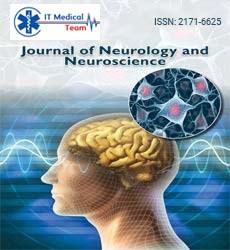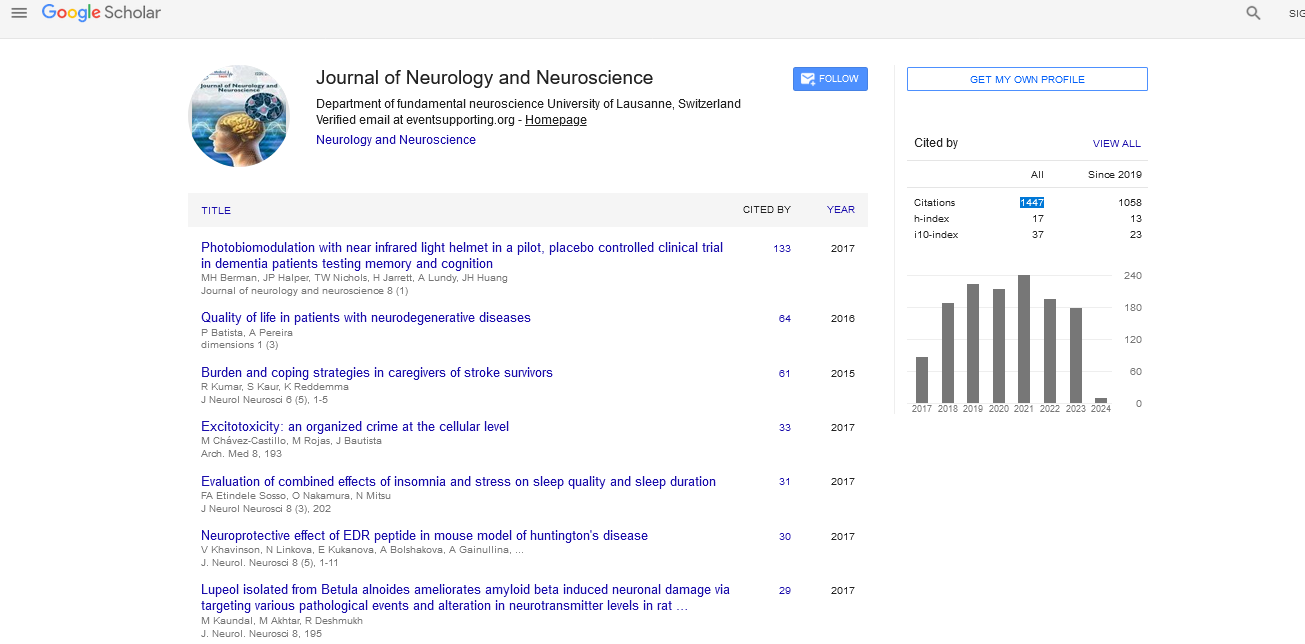Perspective - (2025) Volume 16, Issue 1
Exploring the impact of brain lesion characteristics on motor abilities and cortical adaptation in hemiplegic cerebral palsy
Ferre Clowry*
Department of Imaging Diagnostics, Dental Allergology and Physiotherapy, Medical University of Plovdiv, 4000 Plovdiv, Bulgaria
*Correspondence:
Ferre Clowry, Department of Imaging Diagnostics, Dental Allergology and Physiotherapy, Medical University of Plovdiv, 4000 Plovdiv,
Bulgaria,
Email:
Received: 30-Jan-2025, Manuscript No. ipjnn-25-15567;
Editor assigned: 01-Feb-2025, Pre QC No. P-15567;
Reviewed: 14-Feb-2025, QC No. Q-15567;
Revised: 20-Feb-2025, Manuscript No. R-15567;
Published:
27-Feb-2025
Introduction
Hemiplegic Cerebral Palsy (CP) is a neurodevelopmental
disorder that results in motor impairments, particularly
affecting one side of the body. This condition is
typically caused by brain lesions that occur during early
development, leading to permanent disruptions in
motor control. Understanding how the characteristics
of these brain lesions influence motor abilities and
cortical reorganization is crucial for improving treatment
strategies and optimizing rehabilitation for individuals
with hemiplegic CP. This article explores the relationship
between brain lesion characteristics, motor function, and
cortical adaptation, providing insights into how the brain
compensates for motor deficits in individuals with this
condition.
Cerebral palsy refers to a group of disorders that
affect movement, muscle tone, and motor skills due
to abnormal brain development or brain damage that
occurs before, during, or shortly after birth. Hemiplegic
cerebral palsy is a subtype in which one side of the
body is predominantly affected. The motor impairments
associated with hemiplegic CP can range from mild
weakness or coordination issues to severe paralysis. These
impairments are typically the result of damage to specific
areas of the brain responsible for motor control, often
in the motor cortex or associated neural pathways. In
individuals with hemiplegic CP, the extent and location
of brain lesions—whether they affect the left or right
hemisphere and whether the damage is unilateral or
bilateral—can vary significantly. The characteristics of
these lesions, including their size, location, and the timing
of the injury during brain development, play a critical
role in determining the severity of motor deficits and
the potential for recovery or adaptation through cortical
reorganization [1].
Brain lesions in individuals with hemiplegic CP
typically affect the motor cortex, which is responsible
for controlling voluntary movements, as well as other
areas involved in motor coordination, such as the basal
ganglia, cerebellum, and corticospinal tract. The specific
characteristics of the lesions—such as their location and
extent—can have a profound impact on the severity
and nature of the motor impairments seen in these
individuals. The location of the brain lesion is one of
the most important factors influencing motor function
in individuals with hemiplegic CP. Lesions in the primary
motor cortex, particularly in the contralateral hemisphere
(opposite the affected side of the body), tend to result
in more pronounced motor deficits. This is because the
motor cortex has a somatotopic organization, meaning
that different regions of the motor cortex correspond to
specific parts of the body. Damage to the areas of the
motor cortex that control fine motor skills, such as those
for hand and finger movements, often leads to significant
impairment in hand function, a hallmark feature of
hemiplegic CP. In some cases, brain lesions can also affect secondary motor areas, such as the premotor cortex or
supplementary motor area. These areas play a role in
the planning and coordination of voluntary movements.
Damage to these regions can result in difficulties with
complex motor tasks, coordination, and motor learning,
which can further complicate rehabilitation efforts [2].
Description
The size and extent of the lesion are also critical
factors that determine motor outcomes. Larger lesions,
especially those that affect major motor pathways such
as the corticospinal tract, tend to result in more severe
motor impairments. In contrast, smaller lesions that
affect localized areas of the motor cortex may lead to
more specific motor deficits, such as weakness or loss
of dexterity in a particular muscle group, but may leave
other motor functions relatively intact. In cases where the
lesion involves bilateral brain injury, motor impairments
can be more diffuse and affect both sides of the body. This
is less common in hemiplegic CP, which typically involves
unilateral brain damage, but it can occur in more severe
cases. The impact of bilateral lesions on motor abilities
can vary depending on the degree of damage to the
motor cortex and its connections. One of the remarkable
features of the brain is its ability to adapt and reorganize
itself in response to injury, a phenomenon known as
cortical reorganization. In individuals with hemiplegic CP,
cortical reorganization plays a critical role in compensating
for lost motor function. The brain’s ability to rewire itself
and form new neural connections can help mitigate the
effects of the brain lesion, potentially improving motor
abilities over time. However, the success of this process
depends on several factors, including the timing of the
injury, the extent of the damage, and the individual’s age
and rehabilitation efforts [3].
Neuroplasticity is the process by which the brain
changes its structure and function in response to injury.
In the context of hemiplegic CP, neuroplasticity can allow
for the redistribution of motor control from the damaged
hemisphere to the intact hemisphere or other parts
of the brain. For example, if the motor cortex on one
side of the brain is damaged, the motor cortex on the
opposite side may take over some of the motor control
functions. This process can help compensate for the loss
of function, but it may not fully restore the precision
or coordination of movement. In addition to shifting
motor control to the opposite hemisphere, the brain may
recruit other areas, such as the premotor cortex or the
cerebellum, to assist in motor planning and coordination.
This is particularly important in children, whose brains are
still developing and are more likely to engage in these
adaptive processes. Early rehabilitation interventions can
encourage and enhance neuroplasticity, leading to better
motor outcomes.
Age plays a significant role in the brain’s capacity for
cortical reorganization. In young children, the brain is
more plastic and capable of reorganizing more effectively
than in adults. This is why early intervention in hemiplegic
CP is critical. In children, the brain has a greater capacity
to form new neural connections and reorganize its motor
pathways to compensate for the loss of function. As a
result, children with hemiplegic CP often show greater
potential for motor improvement with appropriate
therapy. In contrast, in adults or older children with more
established neural pathways, cortical reorganization may
be less effective. The extent of motor recovery in these
individuals may be limited by the brain's reduced plasticity.
However, research suggests that even in adults, targeted
rehabilitation and neurostimulation techniques, such as
Transcranial Magnetic Stimulation (TMS) or Constraint-
Induced Movement Therapy (CIMT), can promote cortical
reorganization and enhance motor recovery [4].
Therapeutic interventions play a critical role in
promoting cortical reorganization in individuals with
hemiplegic CP. Rehabilitation strategies that focus
on task-oriented training, repetitive practice, and the
use of both physical and occupational therapy can
encourage the brain to reorganize and improve motor
function. One such approach is Constraint-Induced
Movement Therapy (CIMT), which involves restricting
the unaffected limb and encouraging the use of the
affected limb to perform daily tasks. This technique
has been shown to enhance neuroplasticity and motor
function in children and adults with hemiplegic CP. Other
approaches, such as neurofeedback, transcranial Direct
Current Stimulation (tDCS), and mirror therapy, also
show promise in promoting cortical adaptation. These
therapies target specific brain regions to enhance motor
control and encourage the brain to reorganize around
the damaged areas. By enhancing neuroplasticity and
cortical reorganization, these interventions can improve
motor abilities, even in the presence of significant brain
lesions. [5].
Conclusion
The impact of brain lesion characteristics on motor
function and cortical adaptation in hemiplegic cerebral
palsy is complex and multifaceted. The location, size,
and extent of the lesion play critical roles in determining
the severity of motor impairments, while cortical
reorganization offers a mechanism through which the
brain attempts to compensate for lost motor function.
The success of cortical reorganization depends on factors
such as age, lesion characteristics, and the timing of
intervention. Early diagnosis and intervention are key
to optimizing the potential for recovery and improving
motor abilities in individuals with hemiplegic CP. By
understanding the relationship between brain lesion
characteristics and cortical adaptation, clinicians and
researchers can develop more effective treatments and
rehabilitation strategies to enhance motor function and
improve the quality of life for individuals with hemiplegic
cerebral palsy.
References
- Franki I, Mailleux L, Emsell L, et al. The relationship between neuroimaging and motor outcome in children with cerebral palsy: A systematic review–Part A. Structural imaging. Res Dev Disabil. 2020; 100:103606.
Google Scholar, Crossref, Indexed at
- Staudt M, Niemann G, Grodd W, et al. The pyramidal tract in congenital hemiparesis: relationship between morphology and function in periventricular lesions. Neuropediatrics. 2000; 31(05):257-264.
Google Scholar, Crossref, Indexed at
- Griffis JC, Allendorfer JB, Szaflarski JP. Voxel-based Gaussian naïve Bayes classification of ischemic stroke lesions in individual T1-weighted MRI scans. J Neurosci Methods. 2016; 257:97-108.
Google Scholar, Crossref, Indexed at
- Waymont JM, Petsa C, McNeil CJ, et al. Validation and comparison of two automated methods for quantifying brain white matter hyperintensities of presumed vascular origin. J Int Med Res. 2020; 48(2):0300060519880053.
Google Scholar, Crossref, Indexed at
- Reid SM, Meehan EM, Arnup SJ, et al. Intellectual disability in cerebral palsy: a population‐based retrospective study. Dev Med Child Neurol. 2018; 60(7):687-694.
Google Scholar, Crossref, Indexed at





